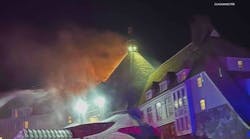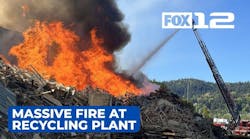In part 1, we looked at wildland PPE, especially footware in making you mobile, safer and much cooler in the appropriate PPE instead of that structural ensemble. We also looked at mobile pumping operations. Specifically, how to put the nozzleman in the right spot to not become a statistic while conducting wildland fire suppression activities. The third rule was to conserve water and coordinate the activities of all companies so that the limited resources (personnel, apparatus and water) that you're issued can be maximized at the point of greatest effectiveness.
Let's continue with the fire attack itself. Just like in the structural world, in the wildland environment, we have two options to implement: offensive attack or defensive operations. In the defensive mode, we have to elect structure protection mode. Sometimes the best way to protect structures is to go on the attack. We'll get into the defensive/structure protection mode in part 3, but for know, let's look at the offensive attack strategy.
In order to select the best strategy, we have to have a good size-up. The mental assessment by the first in officer is still a critical part of the equation. There are a number of factors involved, but let's keep it simple.
The first part of the wildland fire size-up is the size of the fire. If you live in a "wide-open spaces state or region you'll probably be taking "acres" or portions thereof. In the west, we normally start with a "small spot" then move to a "large spot" then to "quarter acre, half-acre and then in half-acre increments until we can paint a pretty accurate picture for those other companies and agencies holding their breath and waiting for the first radio report. If you're in one of those larger metro-kinds-of-places, and you wouldn't know an acre if it bit you, you can just give an approximate length by width assessment and go from there.
The second component of the wildland size-up is type of fuels. We're going to use rule of thumbs. Let's say grass, weeds and hay are "light" fuels. Scrub bushes, small vegetation from about 3-5 feet are "medium fuels". Trees in a forested or wooded area are "heavy fuels" .
The third component of the wildland size-up is the "rate of spread". We're going to use "slow, moderate and fast." How fast is fast? It depends what you usually see in your district or region. Start using these terms and you'll start to get better at classifying it.
The fourth component is what is threatened? Adding the line, "





